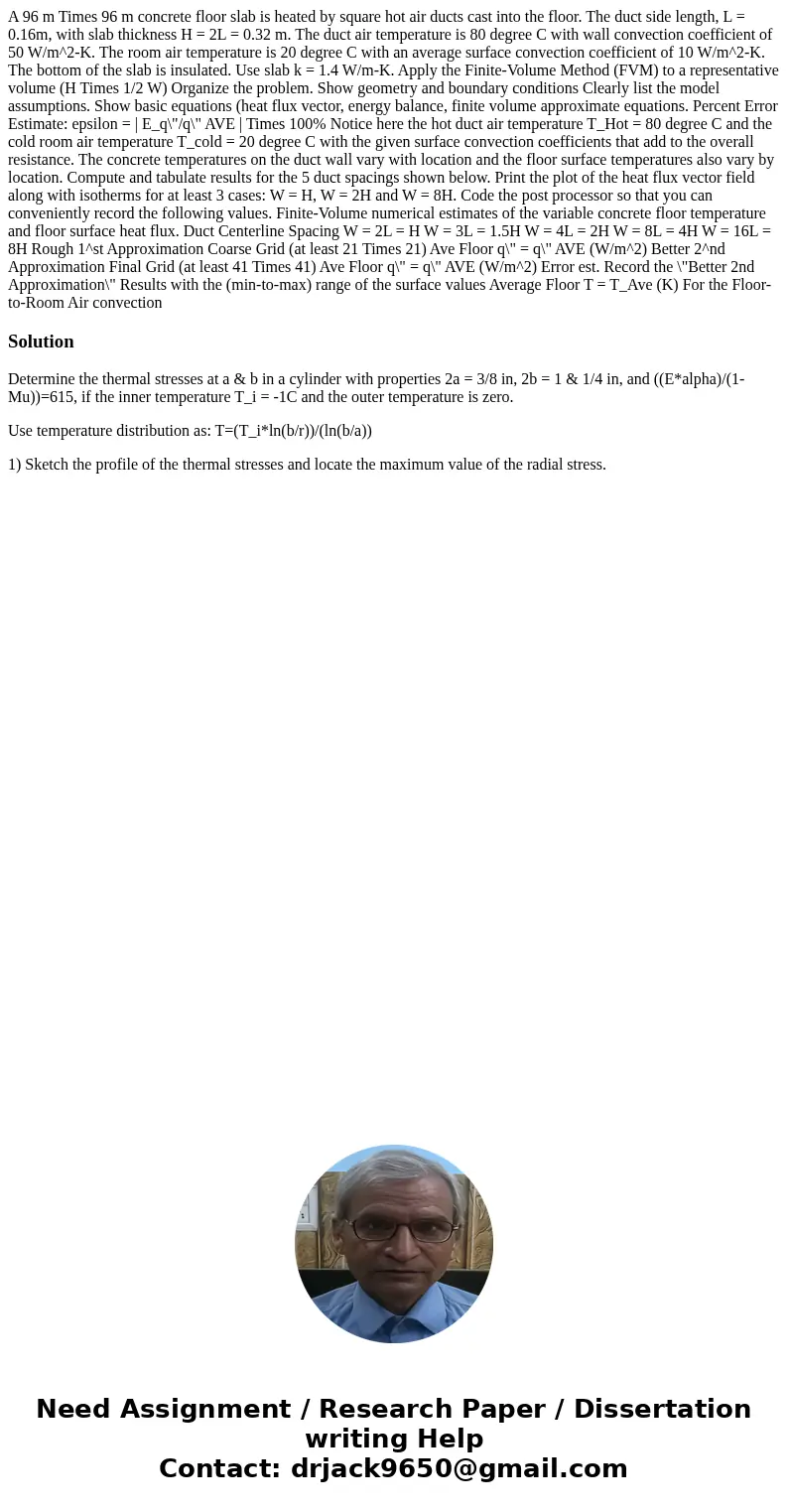A 96 m Times 96 m concrete floor slab is heated by square ho
A 96 m Times 96 m concrete floor slab is heated by square hot air ducts cast into the floor. The duct side length, L = 0.16m, with slab thickness H = 2L = 0.32 m. The duct air temperature is 80 degree C with wall convection coefficient of 50 W/m^2-K. The room air temperature is 20 degree C with an average surface convection coefficient of 10 W/m^2-K. The bottom of the slab is insulated. Use slab k = 1.4 W/m-K. Apply the Finite-Volume Method (FVM) to a representative volume (H Times 1/2 W) Organize the problem. Show geometry and boundary conditions Clearly list the model assumptions. Show basic equations (heat flux vector, energy balance, finite volume approximate equations. Percent Error Estimate: epsilon = | E_q\"/q\" AVE | Times 100% Notice here the hot duct air temperature T_Hot = 80 degree C and the cold room air temperature T_cold = 20 degree C with the given surface convection coefficients that add to the overall resistance. The concrete temperatures on the duct wall vary with location and the floor surface temperatures also vary by location. Compute and tabulate results for the 5 duct spacings shown below. Print the plot of the heat flux vector field along with isotherms for at least 3 cases: W = H, W = 2H and W = 8H. Code the post processor so that you can conveniently record the following values. Finite-Volume numerical estimates of the variable concrete floor temperature and floor surface heat flux. Duct Centerline Spacing W = 2L = H W = 3L = 1.5H W = 4L = 2H W = 8L = 4H W = 16L = 8H Rough 1^st Approximation Coarse Grid (at least 21 Times 21) Ave Floor q\" = q\" AVE (W/m^2) Better 2^nd Approximation Final Grid (at least 41 Times 41) Ave Floor q\" = q\" AVE (W/m^2) Error est. Record the \"Better 2nd Approximation\" Results with the (min-to-max) range of the surface values Average Floor T = T_Ave (K) For the Floor-to-Room Air convection 
Solution
Determine the thermal stresses at a & b in a cylinder with properties 2a = 3/8 in, 2b = 1 & 1/4 in, and ((E*alpha)/(1-Mu))=615, if the inner temperature T_i = -1C and the outer temperature is zero.
Use temperature distribution as: T=(T_i*ln(b/r))/(ln(b/a))
1) Sketch the profile of the thermal stresses and locate the maximum value of the radial stress.

 Homework Sourse
Homework Sourse